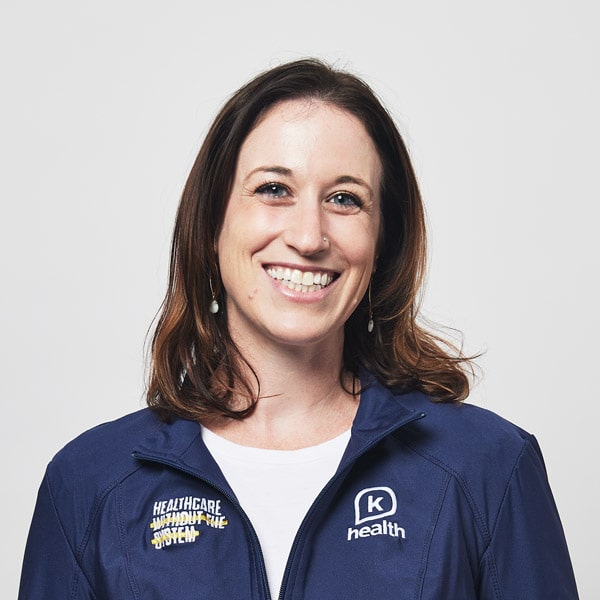If you’ve ever had a stye, you know it can be painful, obtrusive, and downright annoying, as well as hard to ignore as you go about your daily life.
It can be oh-so-tempting to go Dr. Pimple Popper on it and squeeze the stye to release the fluid inside. But not only will this not speed healing, it could also lead to bigger problems.
In the following article, I’ll explain why it’s a bad idea to pop a stye and the best ways to properly treat a stye. I’ll also discuss what a stye is, what causes it, and when to see a doctor.
This way you can keep your eye health and overall health in top condition.
What Is a Stye?
A stye (also called a hordeolum) is a bacterial infection of a clogged eyelid pore or gland that causes a small, painful bump along the eyelash line or underneath the eyelid.
The tender lump is typically red in color and may have a white center (this is pus), much like a pimple.
A stye typically goes away on its own after about a week without medical treatment.
Symptoms of a stye
The most common symptoms of a stye include:
- A red, pimple-like bump on the edge of the eyelid
- Pain and swelling of the lash line and/or eyelid
- Tearing in the affected eye
- Scratchiness or feeling like something is in the eye
- Sensitivity to light
- Crustiness around the eye
Concerned about your stye? Chat with a doctor through K Health.
get startedWhy Popping a Stye Is a Bad Idea
While some home remedies can help treat a stye, you should never try to pop a stye.
If you do, it can cause the bacteria to spread into the eyelid and cause further infection. Popping a stye also means breaking the skin, and any open wound is more susceptible to bacteria and other contaminants.
This can cause the stye infection to worsen or lead to a different form of infection.
Additionally, there’s a chance the bump is a chalazion rather than a stye. A chalazion is a chronic bump on the eyelid that is not an infection.
Popping a chalazion could lead to an eye injury.
How to Properly Treat a Stye
Most of the time, a stye will go away on its own with home remedies.
Home remedies
The gold-standard at-home treatment for styes is a warm compress: Soak a clean washcloth in hot water. Wring the water out, then gently place the damp cloth on the stye for 15 minutes at least four times a day.
This moist heat may encourage draining and speed recovery.
Gently cleaning the affected area with water and mild soap or baby shampoo may also help reduce pain and swelling.
Medical treatments
If a stye does not go away on its own or is extremely bothersome, see a healthcare professional.
Prescription antibiotic eye drops or antibiotic ointment applied to the stye can help fight the infection.
Oral antibiotics are rarely needed for a stye, but may be considered if you have signs of an expanding infection to your eyelid or around your eye.
If a stye is especially stubborn, an ophthalmologist may do minor, in-office surgery.
They make an opening in the stye and drain the pus, causing it to heal and shrink quicker.
To be clear, this should only be done by a medical professional. Do not try to drain a stye at home.
Prevention
The best way to deal with a stye is to make sure it never develops in the first place. The following simple practices may help prevent a stye:
- Use good hygiene: Always wash your hands before touching your eyes.
- Be smart with makeup: Throw out cosmetic products after 2-3 months. Never share makeup and always wash makeup off before going to bed.
- Take care with contacts: If you wear contact lenses, wash your hands before handling them and properly disinfect them every day.
What Causes a Stye?
Styes form when oil glands in the eyelids become infected with bacteria (most often Staphylococcus aureus).
Certain risk factors can make someone more likely to develop styes:
- Improper hygiene: Bacteria can easily transfer from the hands to the eyes if you do not regularly and properly wash your hands with soap and water.
- Unhealthy makeup habits: Cosmetics can harbor bacteria, so it’s important to throw away old makeup, never share makeup, and properly clean makeup brushes.
- Wearing contact lenses: Poor contact lens hygiene can cause bacteria to get in and around the eyes. Disinfect contact lenses daily.
- Skin and medical conditions: Blepharitis, seborrheic dermatitis, acne rosacea, dandruff, diabetes, and high lipid levels are associated with an increased risk of styes.
Concerned about your stye? Chat with a doctor through K Health.
get startedWhen to See a Doctor?
Most styes go away on their own. However, see a doctor if:
- The stye doesn’t get better after 5-7 days
- Symptoms worsen after 2-3 days
- Your eyelid is swollen shut
- Your vision changes
- Your whole eyelid feels hot or is red
- The bump leaks pus or blood
- The stye keeps returning
How K Health Can Help
Did you know you can access online urgent care with K Health?
Check your symptoms, explore conditions and treatments, and if needed, text with a healthcare provider in minutes.
K Health’s AI-powered app is based on 20 years of clinical data.
Frequently Asked Questions
K Health has strict sourcing guidelines and relies on peer-reviewed studies, academic research institutions, and medical associations. We avoid using tertiary references.
-
Chalazion. (2021).
https://my.clevelandclinic.org/health/diseases/17657-chalazion -
Eyelid Bump. (2020).
https://medlineplus.gov/ency/article/001009.htm -
Home Treatment for Stye. (n.d.).
https://nyulangone.org/conditions/stye-in-adults/treatments/home-treatment-for-stye -
Hordeolum. (2021).
https://www.ncbi.nlm.nih.gov/books/NBK441985/ -
Stye. (2021).
https://my.clevelandclinic.org/health/diseases/17658-stye -
Stye. (2021).
https://www.ncbi.nlm.nih.gov/books/NBK459349/ -
What Are Styes and Chalazia? (2021).
https://www.aao.org/eye-health/diseases/what-are-chalazia-styes -
What Causes a Stye and the Best Ways to Get Rid of One Featuring Singh. (2020).
https://dukeeyecenter.duke.edu/news-events/what-causes-stye-and-best-ways-get-rid-one-featuring-singh

 Medically reviewed
Medically reviewed
